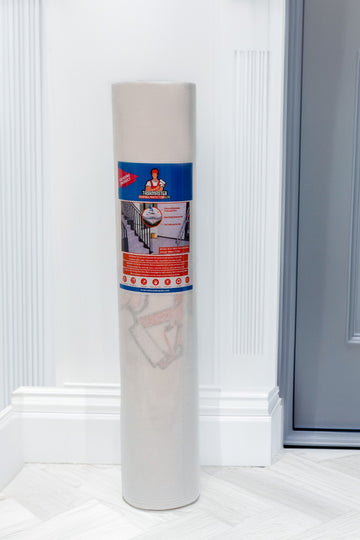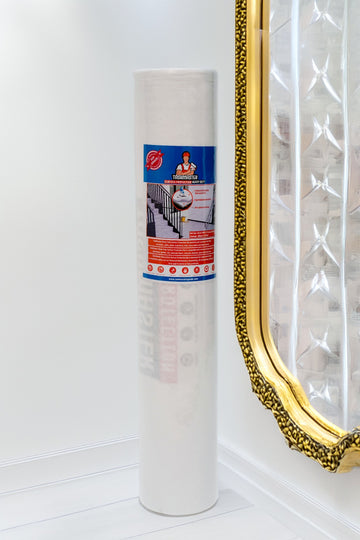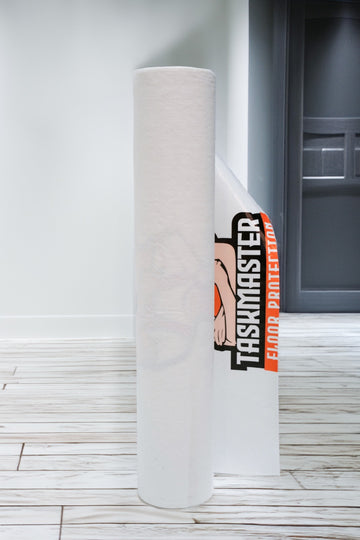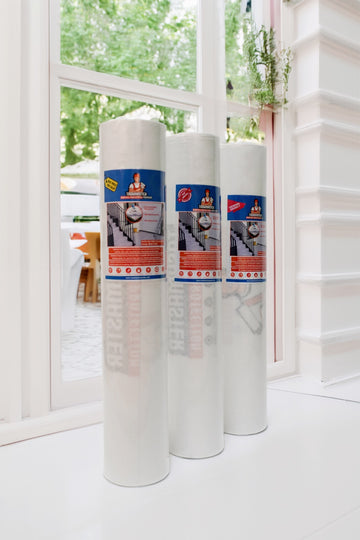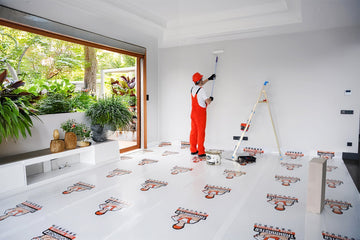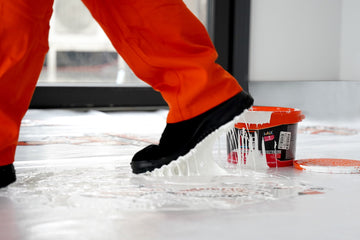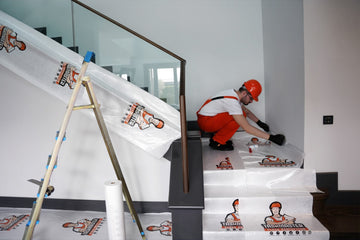Using surface protection is essential for preventing scratches, spills, and impact damage during construction, renovation, and painting projects. However, many professionals unknowingly make mistakes when applying protective covers, leading to ineffective coverage, safety hazards, and costly repairs.
To ensure maximum protection and efficiency, here are the five most common mistakes contractors and workers make—and how to avoid them.
1. Not Cleaning the Surface Before Application
Applying surface protection on a dirty or dusty floor reduces adhesion and can cause air bubbles or slippage. This mistake often leads to ineffective coverage and frequent adjustments.
✅ How to Avoid It: Always sweep, vacuum, or mop the surface before applying protective film. Ensuring a clean, dry surface improves adhesion and enhances durability.
2. Choosing the Wrong Type of Protection
Not all surfaces require the same kind of protection. Using the wrong material can lead to floor damage, moisture buildup, or insufficient coverage.
❌ Example: Using non-breathable plastic film on freshly installed hardwood can trap moisture and cause warping.
✅ How to Avoid It: Choose the right protection for each surface:
- Hardwood & Laminate → Self-adhesive, breathable protection.
- Tile & Stone → Shock-resistant, waterproof covers.
- Carpet → Non-slip, dustproof sheets.
- Concrete & Epoxy → Heavy-duty, impact-resistant films.
3. Overlapping or Gapping the Coverage
Incorrect application can lead to overlapping (wasting material) or gaps (exposing surfaces to damage).
✅ How to Avoid It: Measure the area carefully and apply the cover smoothly, ensuring edges meet without overlaps or exposed gaps. Use a utility knife or scissors for precise cuts.
4. Not Securing the Edges Properly
If the edges of the protection film are not sealed correctly, it can shift, curl up, or create tripping hazards.
✅ How to Avoid It: Use self-adhesive protection like TaskMaster Surface Protection for a firm hold without extra tape or glue. For non-adhesive covers, use temporary tape that won’t damage floors.
5. Removing the Protection Too Early
Some professionals remove floor protection before the job is fully completed, exposing surfaces to last-minute damage from tools, furniture, or workers.
✅ How to Avoid It: Keep protection in place until all work is done, including cleanup. If needed, use a reusable solution that allows temporary removal and reapplication.
Why TaskMaster Surface Protection is the Best Choice
Avoiding these common mistakes is easier when you use high-quality surface protection. TaskMaster Surface Protection is engineered to be durable, easy to apply, and reusable, ensuring professionals get the best coverage with minimal effort.
🔹 Self-Adhesive & Anti-Slip – Stays in place without extra adhesives.
🔹 Waterproof & Shock-Resistant – Protects against spills and heavy impact.
🔹 Reusable & Cost-Effective – Reduces waste while saving money.
🔹 Breathable & Moisture-Resistant – Ideal for all surfaces, including fresh flooring.
Final Thoughts: Protect Right, Work Smarter
Avoiding these five common mistakes ensures maximum efficiency, cost savings, and flawless results. Properly applied surface protection prevents unexpected damages, project delays, and unnecessary expenses—making it a crucial step for every professional job site.

